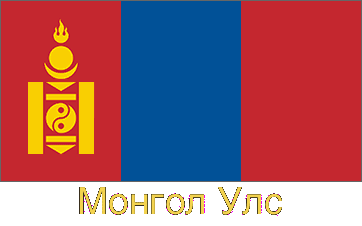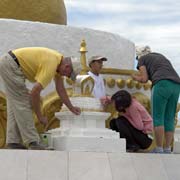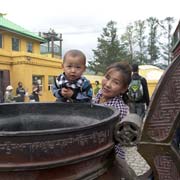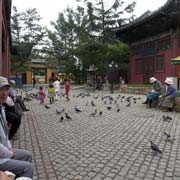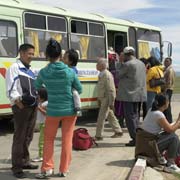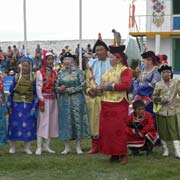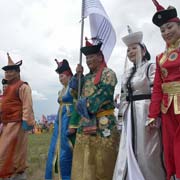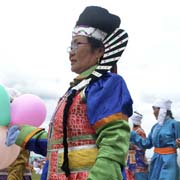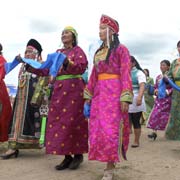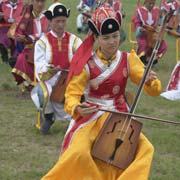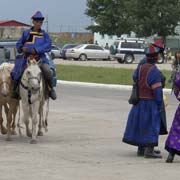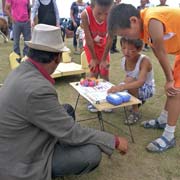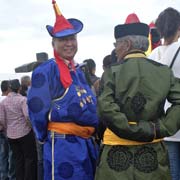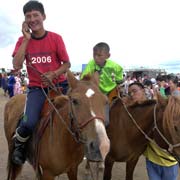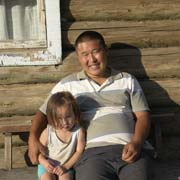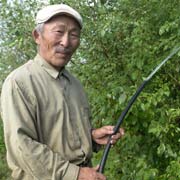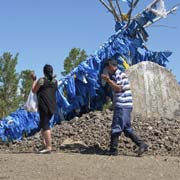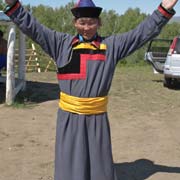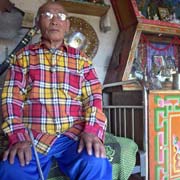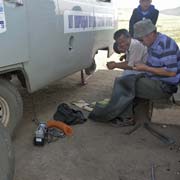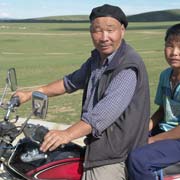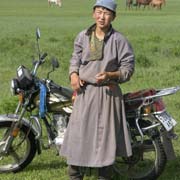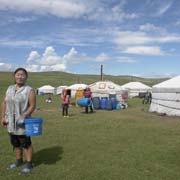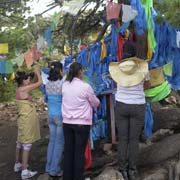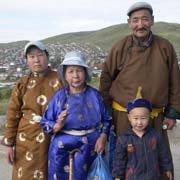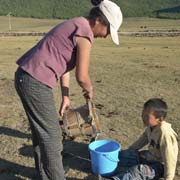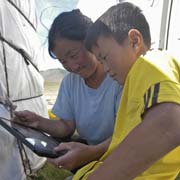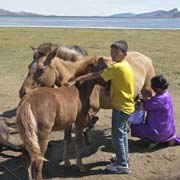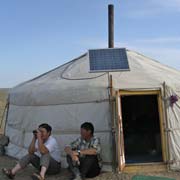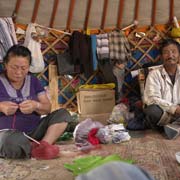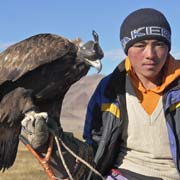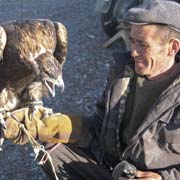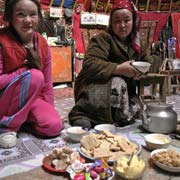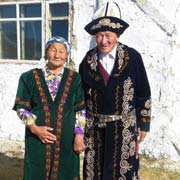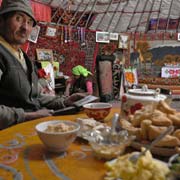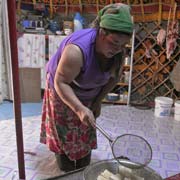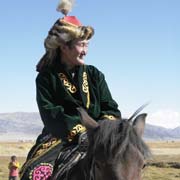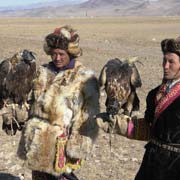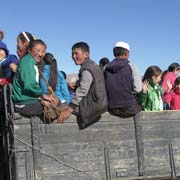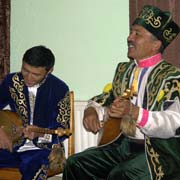Photos of the People of Mongolia
The People of Mongolia
The people of Mongolia are among the most hospitable on earth due to their centuries of nomadic existence on the vast plains of this wide land. Its vast, open steppes and the great distances people would have to move in search of grazing for their animals made that hospitality to others was just necessary, not only a social custom. Each ger would be a place where anyone could find a place to stay and strangers are always made welcome too. Although many Mongolians have moved to the city, most are still a nomad at heart and would prefer to live the free life with their animals in the country.
you may then send it as a postcard if you wish.
The population of present-day Mongolia is about 95% ethnic Mongol, with the main group (86%) the Khalkha, followed by Buriad (Buryats), both belonging to the Eastern Mongolic peoples. Another Mongol group is the Oirat in the west. Small groups of Dukha or Tsaatan, reindeer herders speaking a Tuvan Turkic language, live in the forests of northwestern Mongolia. In the far west, in Bayan Ölgii province, is a substantial population of Kazakhs, a Turkic people, making up almost 4% of the total population of Mongolia.
Mongolian culture is very much alive, as can be seen in the colourful costumes. Nowadays, these are worn mainly in the large yearly festivals, like the Naadam Festival, held in every city and village and the Eagle Festival of the Kazakh people in Bayan-Ölgii: spectacular to see and marvellous to experience. And although almost all Mongols are Buddhist, shaman practices are still performed; there are numerous ovoo, ceremonial stone cairns, where people bring offerings, tie the blue “khadag” scarves around poles and circumambulate around the cairns three times in a clockwise direction.


